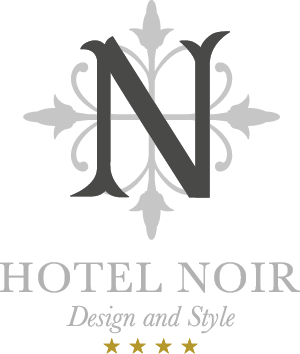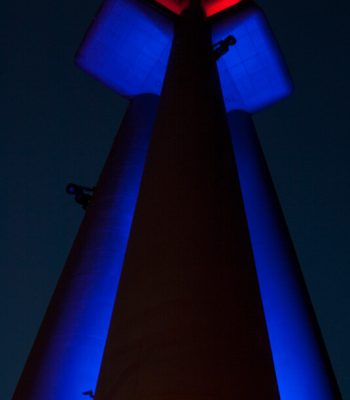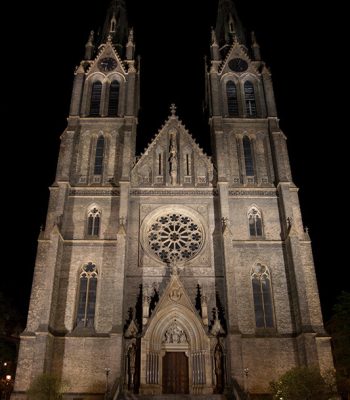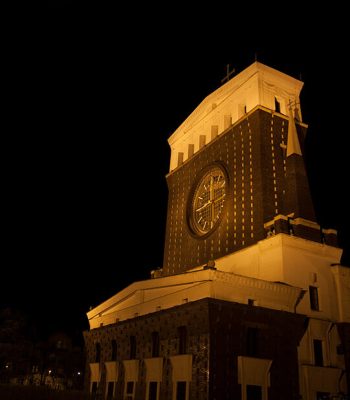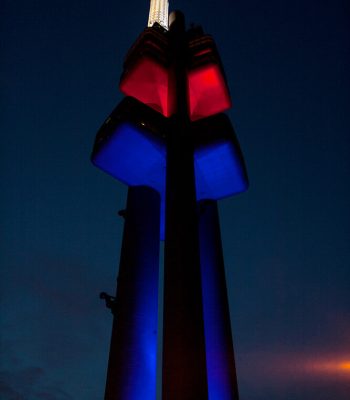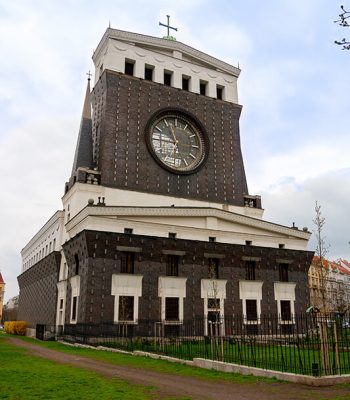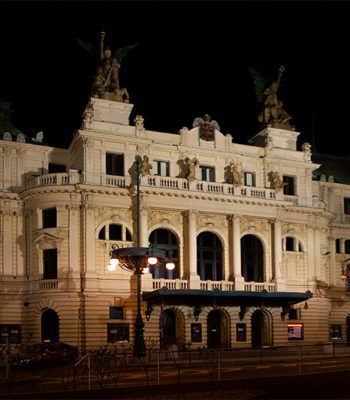Location | Noir Hotel
PRAGUE 2
The Prague 2 district includes part of Nové Město, Vyšehrad, part of Královské Vinohrady and part of Nusle.
This unit was created during the administrative division of the Prague territory into 10 districts in 1960. This reorganization broke the traditional city districts into sometimes up to four or five new districts and severed numerous historical ties. The history of the territory that Prague 2 occupies goes deep into the Czech past.
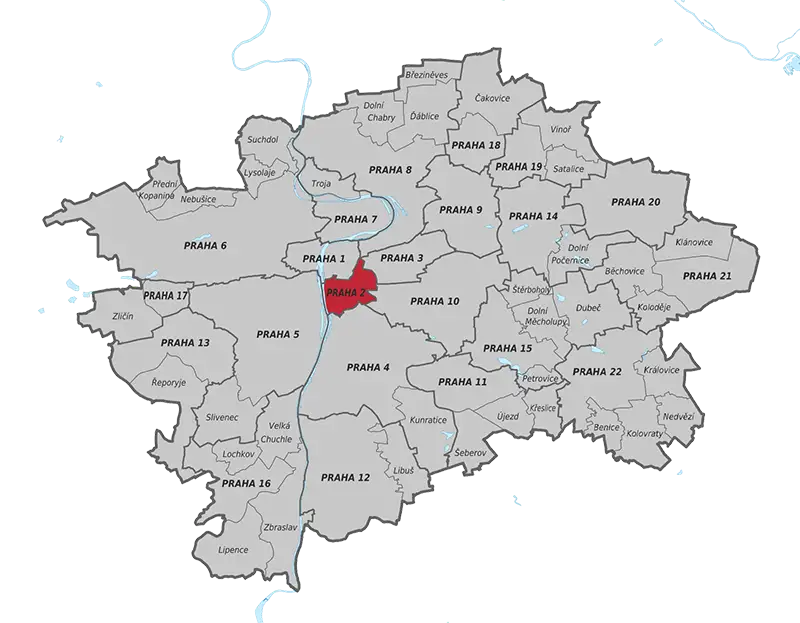
Internet source: wikipedie
- Population: 45,405 (2021)
- Area: 4.19 square kilometers
- Number of houses: 2,336 (2021)
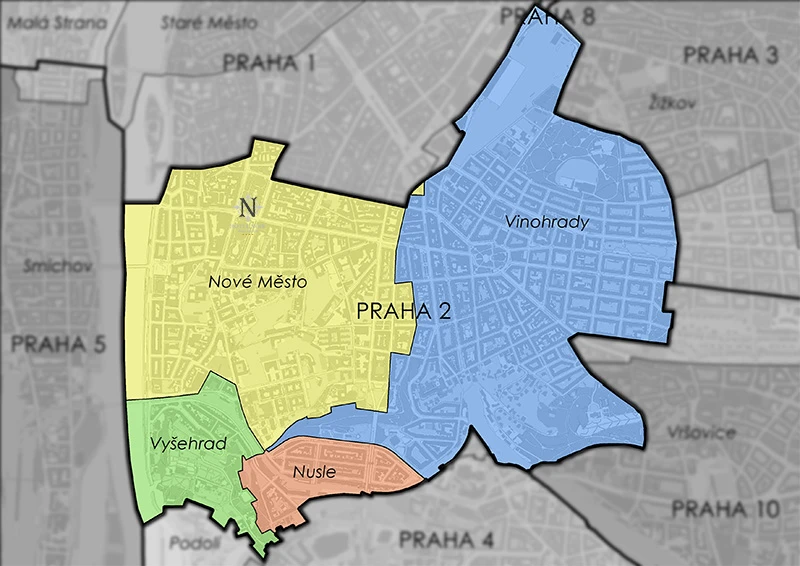
Sign of Prague 2
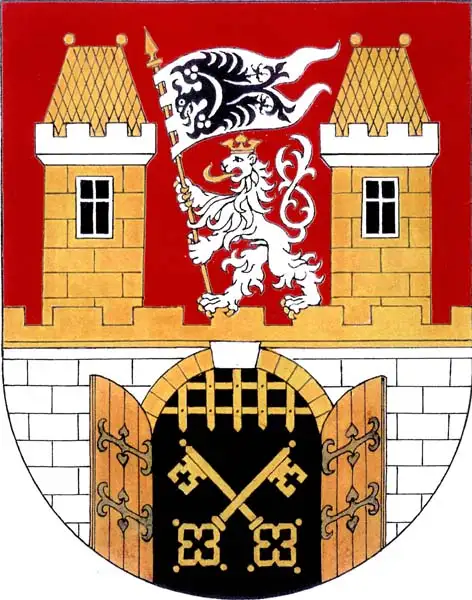
Flag of Prague 2

The main landmarks of Prague 2
Nové Město pražské
The New Town of Prague is inextricably linked with the greatest monarch in Czech history, Charles IV.
At the beginning of Charles’ reign, Prague consisted of three cities – Hradčany, Lesser Town of Prague and Old Town of Prague. Charles IV. decided to build another, much larger one, in the arch of the Vltava around the walls of the Old Town. And so “… the year of the Lord 1348 by the first indication, March 8, in the third year of our reign…” he founded the New Town of Prague.
Vyšehrad
Vyšehrad is one of the oldest and most memorable parts of Prague. Old legends attributed to it the role of the oldest residence of Czech princes, the place from which the wise Libuša and the first Přemyslovs ruled. Who does not know the legend about Horymír and his faithful Šemík, about Bivoj, who lured a dangerous boar to the Old Slavonic Vyšehrad, or about Libuša’s message, which set out from there to meet Přemysl, the future founder of the Bohemian royal family.
Královské Vinohrady
In the places of today’s Vinohrady, there used to be a peaceful idyll of fields, gardens and, above all, vineyards. Královské Vinohrady became an independent municipality only in 1849. In 1875, its northern part separated from the municipality, became independent and took the name Žižkov. After the separation of Žižkov, the Vinohrady council was faced with the difficult task of ensuring municipal affairs on its own. Right after its first meeting, it decided to take care of the school, the town hall and other necessary offices. At the same time, it was agreed to keep the name Královská Vinohrady. On September 26, 1879, Královské Vinohrady was elevated to a city.
Nusle
The settlement of Nusle was spread out already in the Middle Ages in the Botič valley to the east of Vyšehrad, where the vineyards formed a uniform green belt. Soon after that, the area around the church of St. Pankráce, where the Krušina settlement, later called Pankrác, was founded. New development took place in the middle of the 19th century, when the two municipalities were united. The place became famous for the famous Fidlovačka pilgrimage..

Other attractions and important monuments in the vicinity
Smetana Theater (1886-1887, New German Theater)
Theater in Vinohrady (1905-1909, “Vinohrady Theatre”)
Czech Radio Building (1929-1931, Czechoslovak Radio)
Hlavní nádraží (1901-1909, Emperor Franz Josef I., Wilsonovo, Hlavní nádraží, Wilsonovo)
National House in Vinohrady (1893-1894, formerly ÚKDŽ, later KDŽ)
Vinohradská falconry in Riegrovy sady
Vinohradská tržnice (1902), one of the Prague markets
Water Tower (1891)
Vinohrady Cemetery (1885)
Chapel of St. families (1755)
Hus’ Choir (1932-1935)
Church of Saint Ludmila (1888-1893)
Church of the Sacred Heart of the Lord (1928-1932)
Archbishop’s High School in Prague
Václav Hollar Art School
The Čapk brothers’ semi-detached house (1928-1929) in the villa colony of the Association of Journalists (1923-1929)
Gröbe’s villa (1871-1888, Villa Gröbe, “Grébovka”), with Dolní Landhauska and park
Kotěr’s villa (1908-1909)
Laichter House (1908-1909)
Schnirch House (1875)
Šaloun’s Villa (1908-1909)
Villa Osvěta, birthplace of Jan Masaryk
